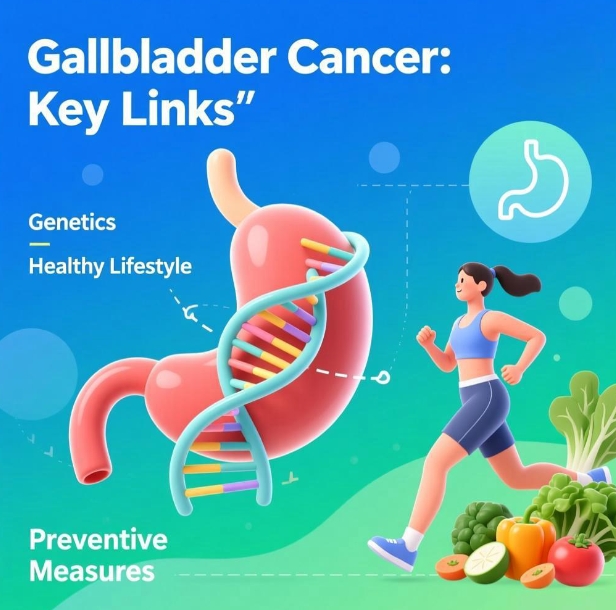Gallbladder cancer is an aggressive malignancy that usually produces no specific early warning signs. Symptoms appear only when the tumour obstructs bile flow, invades adjacent organs, or becomes advanced.
- Right-upper-quadrant pain
A constant, dull ache or colicky pain under the ribs is the most common first complaint; it may radiate to the right shoulder or back and is often mistaken for uncomplicated gallstone disease. - Palpable mass
A firm, non-tender swelling is sometimes felt in the upper abdomen when the tumour has enlarged or the gall-bladder is distended by associated stones. - Jaundice
Yellow discoloration of skin and sclera, dark urine and pale stools develop if the tumour compresses or invades the common bile duct. - Unintended weight loss & anorexia
Rapid loss of >5 % body weight, early satiety and general fatigue reflect malignant cachexia and reduced oral intake. - Nausea and intolerance to fatty foods
Patients report recurrent queasiness, bloating and diarrhoea after meals rich in fat. - Fever & night sweats
Low-grade, intermittent pyrexia is common; high fever with chills suggests acute cholecystitis or super-infection of an obstructed system. - Alarm features
Severe, unrelenting pain, progressive jaundice, ascites, or left-supraclavicular lymph-node enlargement indicate advanced disease with distant spread.
Because findings overlap with benign biliary disorders, any new combination of RUQ pain, weight loss and jaundice—especially in older patients with long-standing gallstones—should prompt urgent imaging and tumour-marker assessment.
| Symptom | Typical Presentation |
|---|---|
| RUQ pain | Constant or colicky, may radiate to shoulder |
| Palpable mass | Firm, non-tender upper-abdominal swelling |
| Jaundice | Yellow skin/sclera, dark urine, pale stools |
| Weight loss | >5 % in weeks, anorexia |
| Fat intolerance | Nausea, bloating, post-prandial diarrhoea |
| Fever | Low-grade; high with infection |
| Alarm signs | Ascites, severe pain, distant nodes |
